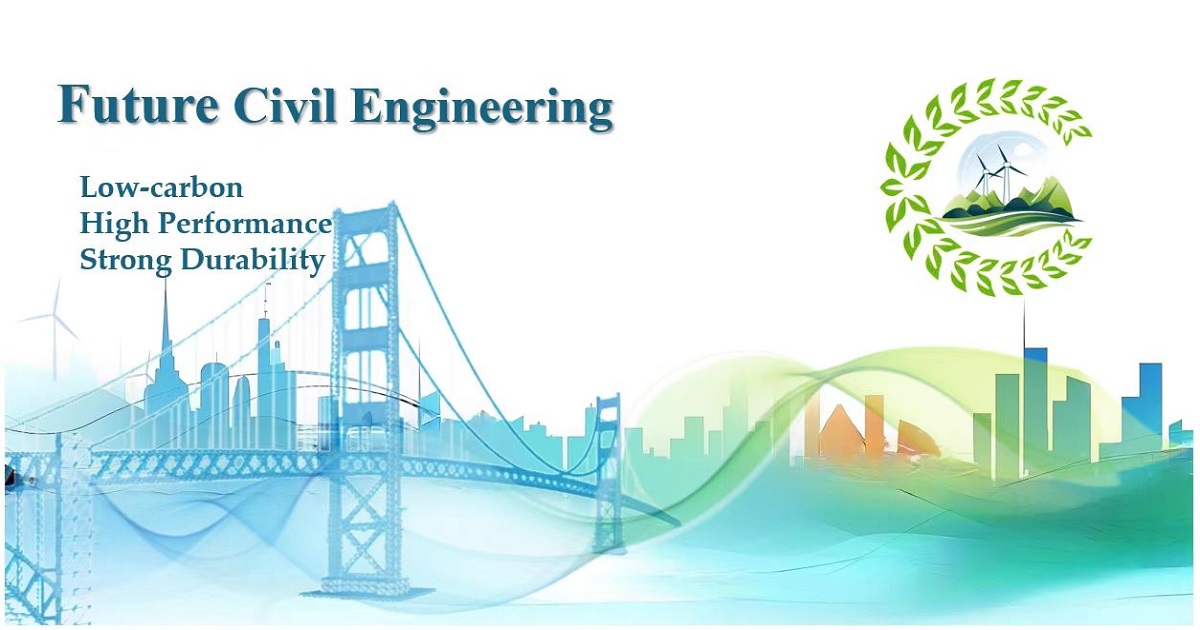- 3.1Impact Factor
- 4.4CiteScore
- 15 daysTime to First Decision
Future Civil Engineering: Low-Carbon, High Performance and Strong Durability
This special issue belongs to the section “Building Materials, and Repair & Renovation“.
Special Issue Information
Dear Colleagues,
With global environmental changes and the development of a green and low-carbon economy, the civil engineering industry, a field with high resource consumption and considerable environmental impacts, is facing an urgent need to transition to low-carbon and green development. Due to the development of remote areas, resource distribution, cost considerations and other aspects of the impact of infrastructure construction have begun to focus on severe environments. In high-temperature, acid and alkali, cold, wet and other harsh environmental conditions, the stability and durability of the engineering structures will be seriously affected, thus creating a higher demand for the innovation and transformation of civil engineering materials and structures. Therefore, the realization of low-carbon emission, high performance and durability is the focus of future civil engineering development.
In recent years, the focus of research in various countries has gradually shifted towards the fields of green building, renewable energy utilization, climate change adaptive planning, disaster risk management, etc., as well as actively developing and utilizing high-performance, high-efficiency, and high-durability materials, exploring new technologies and methods for infrastructure renewal, sustainable structural design, and the construction of intelligent transport systems.
This Special Issue seeks papers on the related fields of research, the application of green and low-carbon building materials, high-performance composite structures and materials, structural safety and durability, new technologies for improving energy efficiency, and intelligent science and technology in engineering projects. It aims to promote comprehensive thinking among researchers and engineers about the future development of the industry under new challenges, stimulate further innovation, and promote the coordinated development of the innovation and sustainability of civil engineering materials and structures.
We welcome papers on the topics listed below and others, including but not limited to the following:
- New green building materials;
- Engineering protection and reinforcement materials;
- High-performance composite material and structures (cement-based, fiber-reinforced, geopolymer based, etc.);
- The performance evaluation and life prediction of engineering structures (bridges, tunnels, geotechnical engineering, hydraulic engineering, etc.);
- Strong durable steel and lightweight construction;
- The durability of engineering structures under extreme environments;
- Recycling and solid waste utilization;
- The technology and application of efficient carbon sequestration and reduction;
- Intelligent science in civil engineering;
- Future clean energy and engineering;
- Low-energy design and energy-saving technology for infrastructure;
- Low-carbon and intelligent concrete.
Dr. Zhongya Zhang
Dr. Minqiang Meng
Dr. Xiujiang Shen
Dr. Abedulgader Baktheer
Guest Editors
Manuscript Submission Information
Manuscripts should be submitted online at www.mdpi.com by registering and logging in to this website. Once you are registered, click here to go to the submission form. Manuscripts can be submitted until the deadline. All submissions that pass pre-check are peer-reviewed. Accepted papers will be published continuously in the journal (as soon as accepted) and will be listed together on the special issue website. Research articles, review articles as well as short communications are invited. For planned papers, a title and short abstract (about 250 words) can be sent to the Editorial Office for assessment.
Submitted manuscripts should not have been published previously, nor be under consideration for publication elsewhere (except conference proceedings papers). All manuscripts are thoroughly refereed through a single-blind peer-review process. A guide for authors and other relevant information for submission of manuscripts is available on the Instructions for Authors page. Buildings is an international peer-reviewed open access semimonthly journal published by MDPI.
Please visit the Instructions for Authors page before submitting a manuscript. The Article Processing Charge (APC) for publication in this open access journal is 2600 CHF (Swiss Francs). Submitted papers should be well formatted and use good English. Authors may use MDPI's English editing service prior to publication or during author revisions.
Keywords
- green building material
- high-performance composite and structure
- ultra-high-performance concrete (UHPC)
- structural durability and strengthening
- sustainable civil engineering
- life-cycle evaluation and prediction
- engineering construction and service
- intelligent construction and clean energy
- low carbon and recycling

Benefits of Publishing in a Special Issue
- Ease of navigation: Grouping papers by topic helps scholars navigate broad scope journals more efficiently.
- Greater discoverability: Special Issues support the reach and impact of scientific research. Articles in Special Issues are more discoverable and cited more frequently.
- Expansion of research network: Special Issues facilitate connections among authors, fostering scientific collaborations.
- External promotion: Articles in Special Issues are often promoted through the journal's social media, increasing their visibility.
- e-Book format: Special Issues with more than 10 articles can be published as dedicated e-books, ensuring wide and rapid dissemination.

